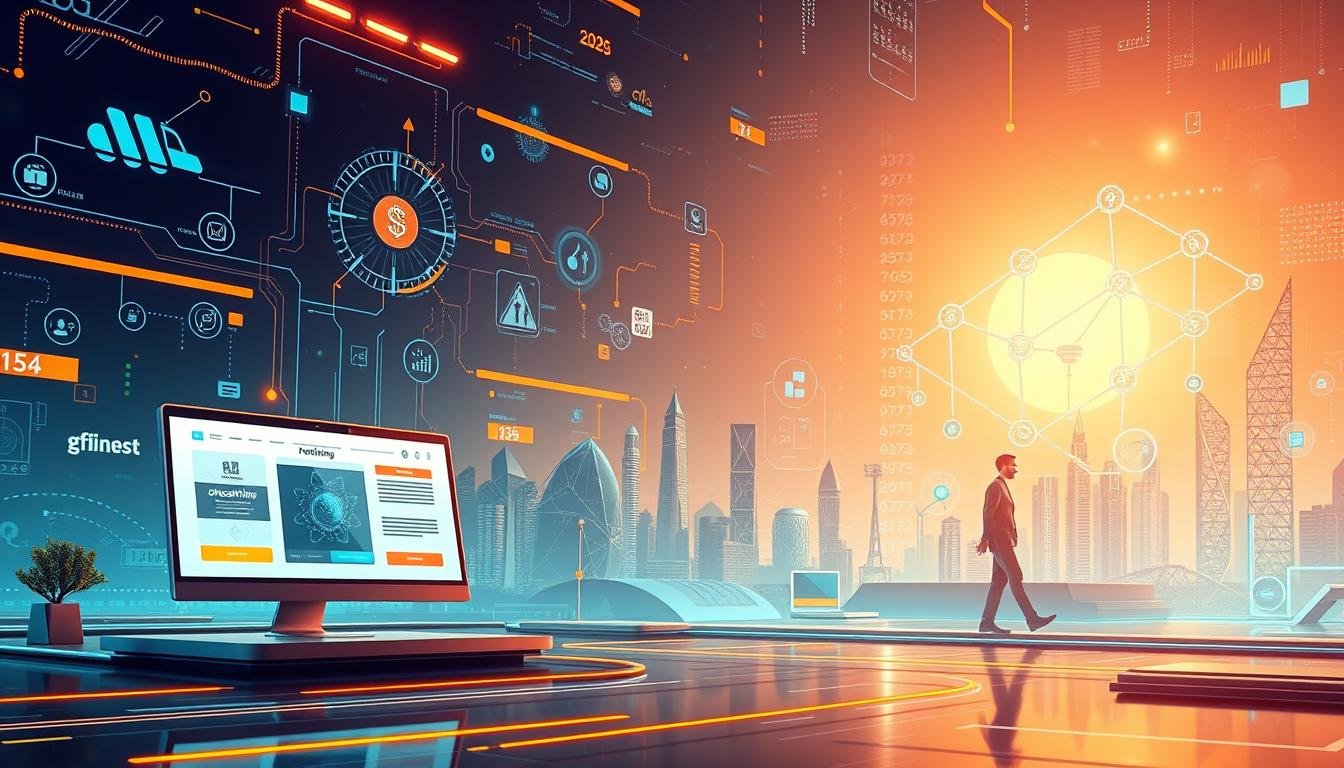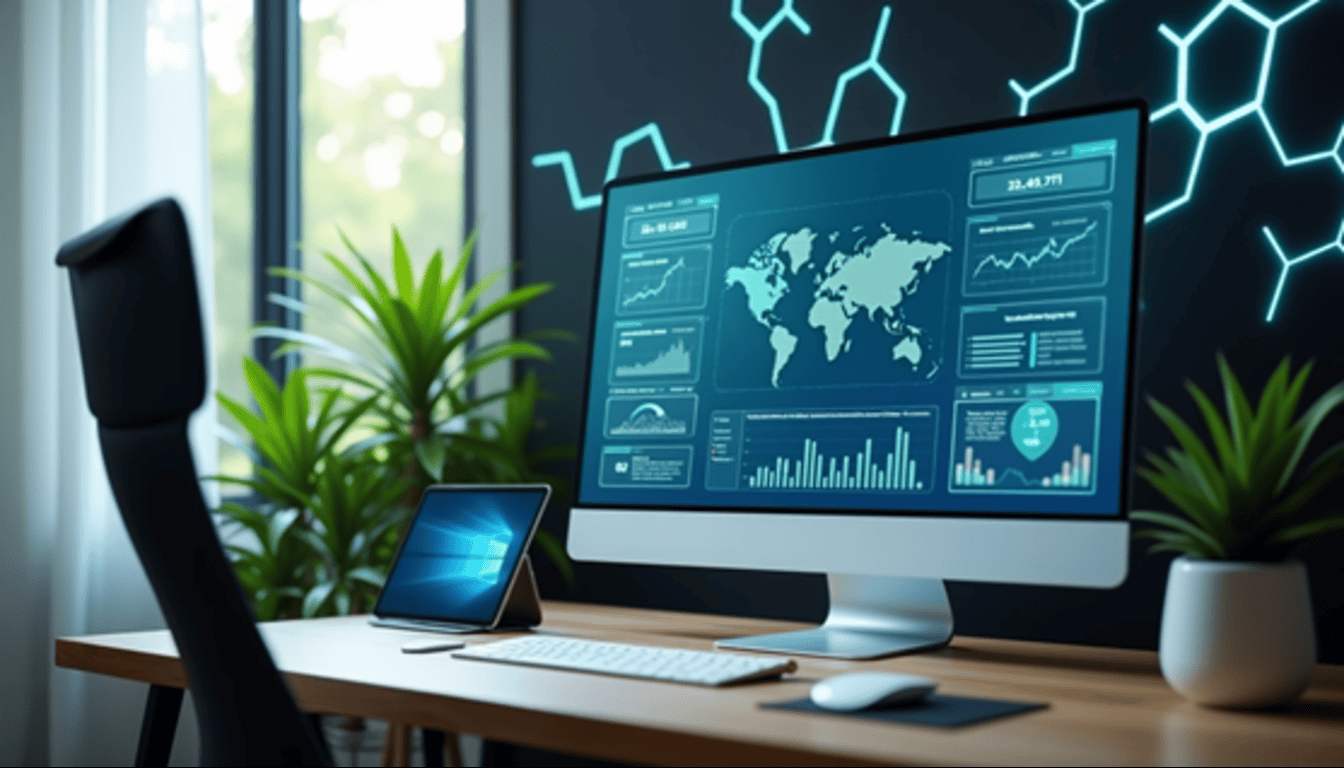Why Your Business Needs a Digital Twin (Real Examples Inside)
Digital twin adoption transforms business operations today. are learning about and investing in this technology. The global market for digital twin technology will reach $73.5 billion by 2027 and grow at 60% annually.
Digital twin solutions yield impressive results in many industries. Companies have cut their development times by 50%. They reduced transportation costs by 10% and improved consumer promise by 20%. These numbers speak volumes, yet many organizations still need clarity about implementing this technology effectively.
This detailed piece helps you understand digital twins through real-life examples. You will learn to implement them in your business. We also tuck into ROI measurement and show how digital twinning affects your operations long-term.
What is Digital Twin Technology and How Does It Work?
A digital twin acts as a virtual copy of a real-life object, system, or process. It stays synchronized at specific intervals and levels of detail. Digital twins differ from standard computer simulations by maintaining constant connections with physical counterparts. This allows live updates and analysis throughout the physical entity’s lifecycle.
The rise from static models to dynamic digital replicas
Digital twin technology has grown substantially since its at a University of Michigan presentation on product lifecycle management. The concept’s roots stretch back to the 1960s. NASA used simple twinning concepts for space programming by building physical copies of systems in space.
Digital twins have progressed through distinct stages:
- Mirroring: Simply duplicating physical objects digitally
- Monitoring: Controlling physical objects based on digital analysis
- Modeling and simulation: Optimizing physical objects through simulation
- Federation: Connecting multiple digital twins for complex systems
- Autonomous: Self-managing twins that solve problems independently
Today’s digital twins have grown beyond static models. They now serve as adaptive systems that copy behavior, predict failures, and recommend live actions.
Core components of a functional digital twin
A functional digital twin needs several combined technologies:
- Internet of Things (IoT): Sensors collect and transmit data from physical assets to digital replicas
- Artificial Intelligence/Machine Learning: Processes data patterns and gives an explanation about performance, maintenance needs, and efficiencies
- Visualization Tools: Dashboards and interfaces that present information in available forms
- Simulation Software: Enables testing of scenarios and predictions
- Data Management Middleware: Bridges hardware and software components to help data communication
These components combine smoothly to create a detailed system. This system mirrors physical reality in digital space and enables both monitoring and predictive capabilities.
How digital twins collect and process live data
Digital twins run through a continuous data cycle:
Sensors start by gathering information from physical objects and environments. This includes temperature, pressure, motion, and other relevant parameters. The information flows through a digital thread—the communication channel between physical and virtual representations.
The system prepares and analyzes this data. AI and ML algorithms help identify patterns and generate analytical insights. The digital twin updates its state in real time with this processed information to stay synchronized with its physical counterpart.
The platform displays results through dashboards. Stakeholders can see trends, make informed decisions, and implement changes to the physical system based on these insights.
This feedback loop helps organizations detect anomalies, predict maintenance needs, and optimize performance before problems arise in the physical world.
Real-World Digital Twin Examples Across Industries
Digital twins are showing real results that directly create business value in industries of all sizes. Many organizations now use this technology to solve specific operational challenges with remarkable precision.
Manufacturing: Optimizing production and predicting maintenance
Digital twin development has found its sweet spot in manufacturing operations. CNH Industrial uses digital twins to optimize maintenance at their Italian plant where they produce Iveco vans. Their digital twin uses simulation and machine learning to forecast component failure probability and improve reliability. Baker Hughes built a complete digital twin of its Nevada plant that gives managers live performance visibility to spot improvement opportunities.
The results speak for themselves – digital twins help manufacturers cut downtime, reduce overtime needs, and achieve .
Healthcare: Patient-specific modeling and treatment planning
Healthcare digital twins act as virtual replicas of patients’ medical and physiological characteristics. Researchers at Johns Hopkins University create tailored digital twins of patients’ hearts that include structure, disease remodeling, and electrical wave propagation. This innovation became the first digital twin in cardiology to receive FDA approval.
Digital twins improve patient care by collecting data from multiple sources. This allows healthcare providers to develop tailored treatment plans based on individual characteristics. The technology also helps with predictive analytics through machine learning algorithms to detect health risks early.
Retail and logistics: Supply chain optimization
Digital twins optimize supply chains by creating virtual replicas of entire networks. Amazon utilizes digital twins to dynamically optimize operations in its physical distribution network. Nestlé built a digital twin to create an efficient supply chain based on factory output. Their teams can quickly compare scenarios to ensure products reach the right locations.
Smart cities: Urban planning and infrastructure management
Cities utilize digital twins to improve urban environments. Barcelona’s digital twin helps assess compliance with the 15-minute city model and influences metro line planning. Bologna applies this technology to mobility, energy, and climate change sectors. These virtual city replicas give planners a platform to interact, ask questions, and generate “what-if scenarios” that show implications for urban development.
Implementing Digital Twin Solutions in Your Business
Digital twin strategy implementation needs proper planning and execution. McKinsey research reveals that works best with a three-step approach. The steps include creating a blueprint, building the original digital twin, and boosting capabilities successful digital twin adoption.
Assessing your business needs and identifying opportunities
Your organization’s digital maturity evaluation should come first. This includes checking your supporting data infrastructures like PLM (Product Lifecycle Management) and PDM (Product Data Management). Complex or dynamic environments that need up-to-the-minute optimization make great candidates for original digital twin use cases. Getting a full picture helps you understand your strengths and weaknesses before investing in technology.
Selecting the right digital twin software and platforms
Digital twin platforms work as PaaS (Platform as a Service). They combine various software tools to build complete digital replicas. These services offer advanced development features to create 3D assets that process data instantly. Platform evaluation should focus on core features like up-to-the-minute data monitoring, lifecycle analysis, integration capabilities, and simulation modeling. The platform’s long-term cost effect needs attention too, since real-life use cases with high message frequency substantially affect expenses.
Starting small: Minimum viable digital twin approach
A small MVP (Minimum Viable Product) works better than trying a complete implementation to cut down commercial and technical risks. This lets you test if your chosen use case delivers intended business outcomes. You can spot potential risks and plan future flexibility. One mining company’s experience shows that even a limited-scope digital twin of an underground conveyor system cut downtime. This generated .over $3 million in additional annual revenue.
Scaling your digital twin initiative
A soaring win with your original digital twin opens doors to expand its capabilities. You can add more data layers and analytics to support new use cases. The Digital Twin Consortium lists five maturity stages: Passive, Starter, Progressive, Mature, and Master. Moving forward, a composable approach helps scale efficiently. You can package business capabilities to reuse or recombine them. This creates more digital twin solutions quickly.
Measuring ROI and Business Impact of Digital Twinning
Companies that use digital twins see measurable returns across several key business metrics. Their executives report bottom-line results that exceed expectations.
Cost reduction through predictive maintenance
Digital twin technology creates amazing maintenance efficiencies. McKinsey research shows that digital twins can cut maintenance costs by up to 40% and boost asset uptime between 5-10%. This proactive approach helps businesses spot equipment failures before they happen, which reduces unplanned downtime by about 20%.
The financial benefits go well beyond immediate savings. Digital twins help monitor and maintain equipment at the right time. This extends machinery’s operational lifespan by 20-30% and reduces how often companies need to buy new equipment. The technology also spots energy waste, which helps organizations cut their utility bills by up to 30%.
Revenue growth through product optimization
Digital twin technology’s effect on revenue looks just as promising. Companies see 3-5% higher sales on products they develop using digital twins. Better features, higher quality, and happier customers drive these results. Users cut their total development times by 20-50%. This means they can enter markets faster and gain competitive advantages.
Products that start as digital twins have 25% fewer quality issues in production. This means less rework and fewer warranty claims. Digital twins also create new revenue streams through services like predictive maintenance and performance optimization. Some product categories see 5-10% more revenue.
Risk mitigation and improved decision-making
Digital twins help leaders make better strategic decisions by letting them test scenarios without risk. A recent survey shows that 92% of companies tracking ROI see returns above 10%. Half of these companies report returns over 20%.
Digital twins offer benefits beyond the numbers. They turn generic information into useful insights. Companies can test implementations in a risk-free environment before making physical changes. This lets them simulate different scenarios and assess potential outcomes with more confidence.
Conclusion
Digital twins have proven their worth by delivering real business value in every industry. Companies that use this technology see impressive results – maintenance costs drop by 40% and product development moves 20-50% faster. These numbers explain why 70% of C-suite leaders now make digital twin investments their priority.
The path to digital twin success needs a smart game plan. Companies should start small with specific projects to test and confirm what works before expanding. While proper planning takes time, the returns make sense financially – most businesses see returns above 10%, and half of them get more than 20% back on their investment.
Digital twins will soon become crucial to compete in any market. The technology’s market value will reach $73.5 billion by 2027. Companies that learn to use this technology now will pull ahead of their competition. Digital twins help businesses improve everything from factory operations to healthcare services and city planning. They open new doors to boost efficiency and drive innovation.
FAQs
1. What is a digital twin and how does it benefit businesses?
A digital twin is a virtual representation of a physical object, system, or process that uses real-time data to simulate, analyze, and optimize performance. It benefits businesses by reducing maintenance costs, improving product quality, and enabling data-driven decision-making across various industries.
2. Can you provide a real-world example of digital twin technology in action?
A notable example is the world’s first 3D-printed pedestrian bridge in Amsterdam. This 12-meter steel bridge spanning the Oudezijds Achterburgwal canal has its own digital twin, allowing for continuous monitoring and analysis of the structure’s performance and condition.
3. How do digital twins contribute to urban planning and smart cities?
Digital twins help in urban planning by creating virtual replicas of entire cities. For instance, Barcelona uses a digital twin to assess its 15-minute city model and plan metro lines, while Singapore’s “Virtual Singapore” aids in urban planning, disaster management, and resource allocation within limited spaces.
4. What are the key components needed to implement a digital twin solution?
Implementing a digital twin requires several integrated technologies, including Internet of Things (IoT) sensors for data collection, artificial intelligence and machine learning for data processing, visualization tools for presenting information, simulation software for scenario testing, and data management middleware to facilitate communication between components.
5. How can businesses measure the ROI of digital twin technology?
Businesses can measure ROI through various metrics, including reduced maintenance costs (up to 40%), increased asset uptime (5-10%), faster product development cycles (20-50% reduction in time), and improved sales (3-5% higher) for products developed using digital twins. Additionally, 92% of companies tracking ROI report returns above 10%, with half seeing returns exceeding 20%.











